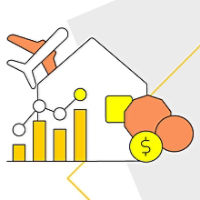“Household spending is starting to show signs of consistency month-on-month and should continue to pick up this year as consumers begin to loosen their purse strings. This recovery is taking longer than expected to occur, but there are green shoots emerging. The annual growth rate has picked up, but the recovery is not yet assured. Spending around sales events and new items show consumers are still deliberate on their spending decisions,” said CBA Senior Economist, Belinda Allen.
“At the same time there remains a clear preference to save and pay down debt. Recent data from CBA showed that just 10 per cent of eligible home loan customers chose to reduce their mortgage direct debit payments following the May interest rate cut. This follows a similar trend after the February rate cut when around 10 per cent of eligible customers had adjusted repayments at the same point in time - eventually rising to 14 percent before the May RBA decision.”
Taking the whole of June quarter together, the HSI lifted by 1.4 per cent, just a little above the 1.2 per cent recorded in the March quarter, but still below the 1.6 per cent recorded in the December quarter of 2024.
“The RBA’s decision to hold rates at 3.85 per cent in July was unexpected, but we antcipate the RBA to cut the cash rate in August by 25 basis points, with November the most likely option for a follow up rate cut. While we still anticipate a pickup in household spending in 2025, a slower rate cutting cycle could soften this recovery over the remainder of the year.”
In June, homeowners without a mortgage saw the weakest yearly spending growth per capita at 3.5 per cent, continuing the trend from May. Homeowners with a mortgage saw a shift higher in spending in June, with gains over the past year now tracking at 5.2 per cent. Meanwhile renters saw a lift to 4.2 per cent.
“Homeowners with a mortgage have reduced spending on transport, hospitality, and food and beverage goods over the past year but lower interest rates are expected to boost disposable income in the coming months. Renters continues to spend more following an increase in April and May,” commented Ms Allen.
NSW recorded the strongest household spending growth in June of the states and territories, rising 0.7 per cent. Over the past year, NSW has outperformed nationally, up 8.4 per cent in a change at the top of the state leaderboard. Meanwhile Queensland has grown 7.3 per cent, recovering well from ex-tropical cyclone Alfred in March, when the state posted the softest growth of all states at just 0.2 per cent.


